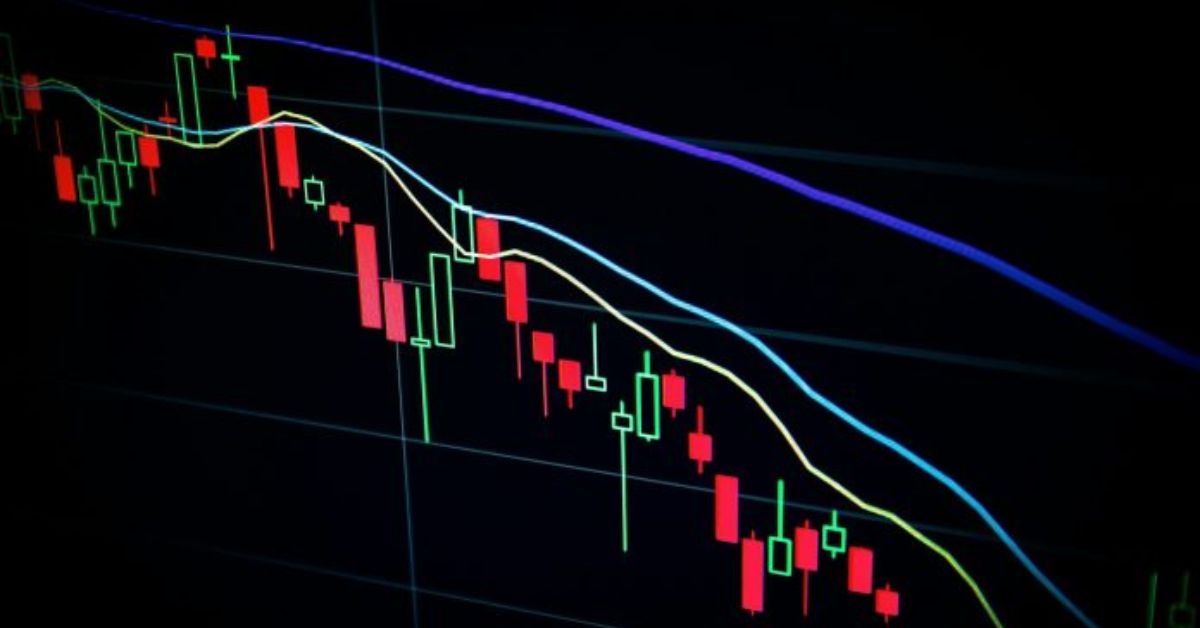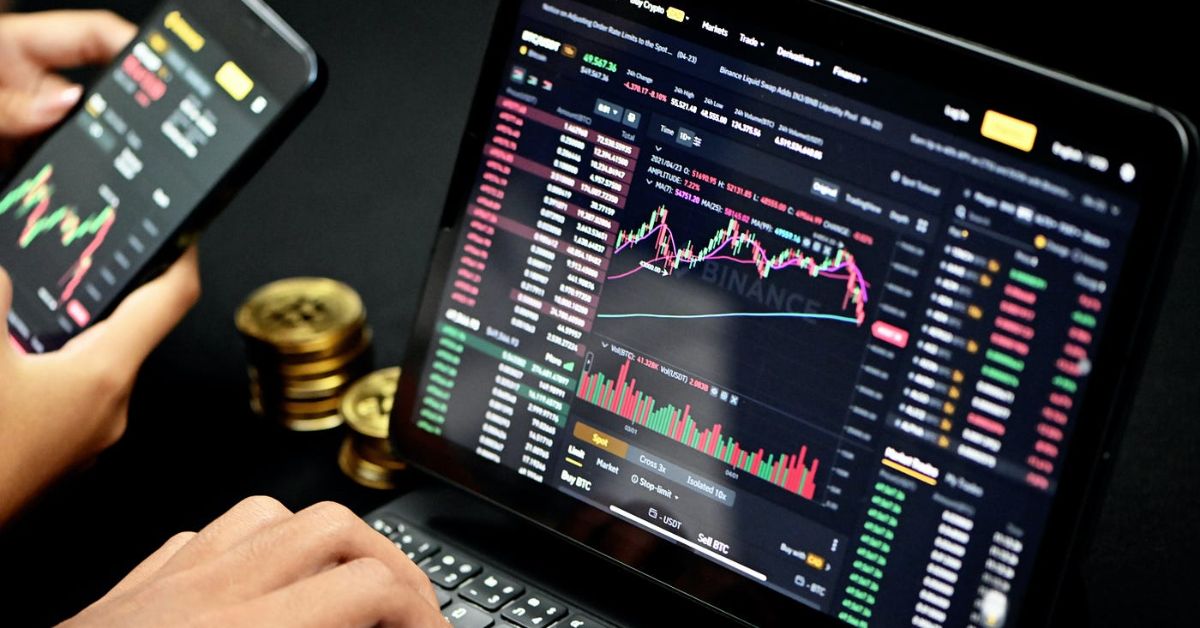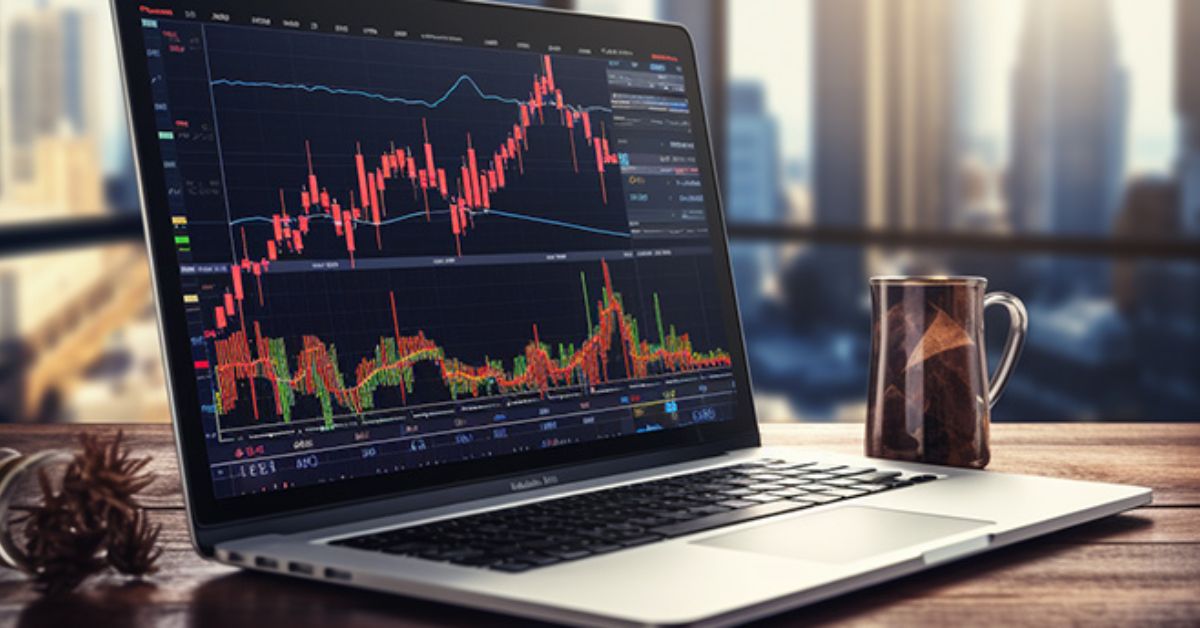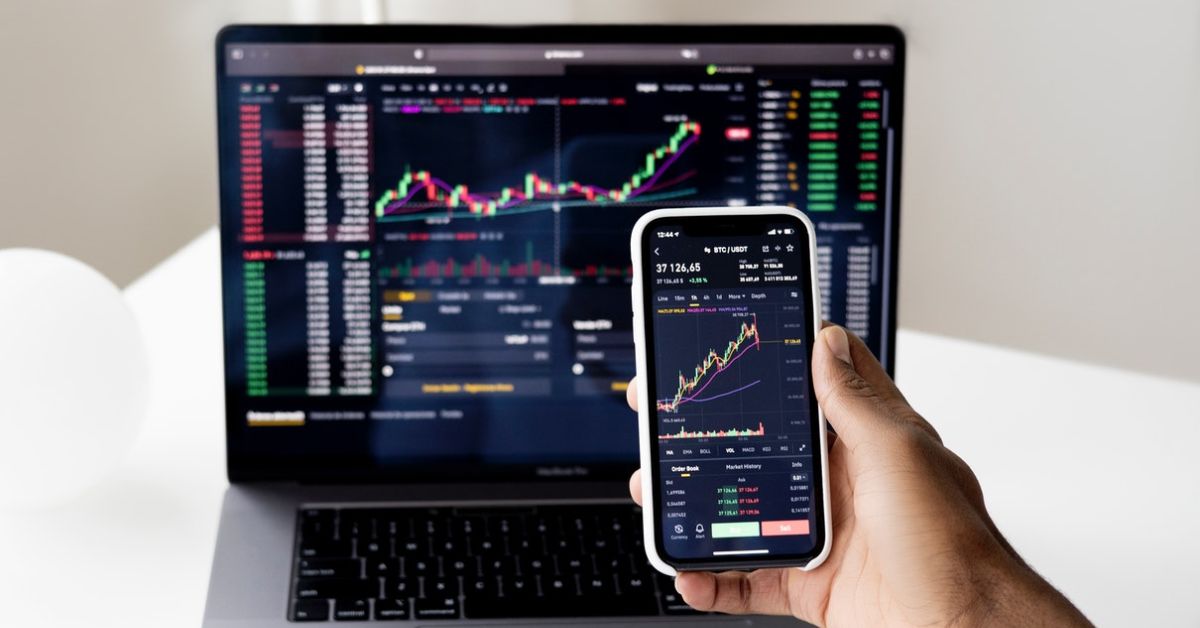Cryptocurrency trading has become a popular investment strategy for many. However, it is essential to understand the risks involved in this highly volatile market. Without adequate risk management, even experienced traders can face significant losses.
In crypto trading, using a platform that gives you the right tools and resources for risk management is crucial. One of these platforms is Prime XBT, which offers traders a trusted environment in which to manage their investments and reduce risks. So, join PrimeXBT today! Use promo code PRIMEOTT to receive a +7% bonus on your deposit.
In this article, we will explore the seven types of risk management strategies every crypto trader should know. You can trade more safely and increase your chances of success in the unpredictable crypto market. Let’s dive in.
1. Market Risk Management

Market risk refers to the potential for financial loss due to fluctuations in the overall market or specific assets. In crypto trading, market risk is often high because of the volatility and unpredictability of cryptocurrency prices.
Several factors, such as global news, regulatory changes, or market sentiment, can trigger sudden price swings. Understanding and managing this risk is essential for long-term success in the crypto space.
Stop-Loss and Take-Profit Orders
One of the most effective strategies for managing market risk is using stop-loss and take-profit orders. These orders allow you to automatically sell your crypto at a predetermined price, helping you limit potential losses and lock in profits. For instance, if you purchase Bitcoin at $30,000, you can set a stop-loss at $28,000 to prevent a significant loss if prices dip.
On the other hand, setting a take-profit order at $35,000 will allow you to exit the trade automatically when the price reaches your target, ensuring you don’t miss out on a profitable opportunity. Check out our On Tilt Trading Store for a stop loss calculator to manage your trading risk and maximize trading potentiality.
Trend Analysis
Another key strategy is trend analysis. You can identify the overall market direction using indicators such as moving averages and make informed decisions about your trades. If the market is in an uptrend, you may want to consider holding onto your positions longer.
Conversely, it may be wise to sell or adjust your positions in a downtrend. By recognizing patterns in market behavior, you can better anticipate price movements and reduce exposure to unfavorable conditions.
Portfolio Diversification
Diversification is a cornerstone of market risk management. Instead of putting all your funds into one cryptocurrency, spread your investments across multiple assets. This strategy helps mitigate the risk of a significant loss in a market downturn in one specific asset.
For example, you could invest in a mix of Bitcoin, Ethereum, and some altcoins to balance your risk and optimize your portfolio for growth and protection.
2. Liquidity Risk Management

Liquidity risk occurs when you cannot buy or sell assets quickly without affecting the asset’s price. In crypto trading, liquidity risk is exceptionally high for smaller or less popular cryptocurrencies that do not have a large trading volume.
This can make executing trades at your desired price challenging, especially in volatile markets. Understanding how to manage liquidity risk is crucial to avoid slippage and ensure your trades are executed efficiently.
Trading on High-Liquidity Exchanges
One of the best ways to mitigate liquidity risk is by trading on high-liquidity exchanges. With established exchanges, such as Binance, Coinbase, and Prime XBT, transactions are smoother and there is less slippage. The higher the liquidity, the more likely you are to execute trades at the price you want without causing significant price changes.
Using Market Depth Analysis
Market depth analysis is another valuable strategy for managing liquidity risk. By studying the order book on exchanges, you can gain insights into the supply and demand for a particular asset at different price levels.
This helps you determine if a market is genuinely liquid enough to support your trades. If an asset has a shallow order book, it may be harder to enter or exit trades without impacting the market price, so it’s essential to consider this before making a trade.
Avoiding Low-Cap or Illiquid Coins
Trading in low-cap or illiquid coins poses significant liquidity risks. These cryptocurrencies are often subject to sharp price fluctuations and can be challenging to trade in large volumes without influencing their market price.
To manage this risk, focus on more liquid, well-established cryptocurrencies with large market caps like Bitcoin or Ethereum. Limiting exposure to illiquid assets can reduce the potential for costly slippage and better manage your trades.
3. Credit and Counterparty Risk Management

Credit and counterparty risk in crypto trading refers to the possibility of a loss due to the failure or default of a trading partner or service provider. You might rely on exchanges, lending platforms, or decentralized finance protocols to execute trades, hold funds, or borrow. As the crypto industry is still developing and largely unregulated, protecting yourself from these risks is essential.
Using Reputable and Regulated Exchanges
To minimize credit and counterparty risk, it’s crucial to trade on reputable and regulated exchanges. Well-known platforms like Prime XBT often adhere to strict compliance standards and are more likely to provide secure and transparent services.
These exchanges also have robust security protocols, including insurance funds to cover potential losses in case of a breach or insolvency. By sticking to established, trustworthy platforms, you reduce the likelihood of encountering issues related to fraud or default.
Storing Crypto in Cold Wallets Instead of Exchanges
Another essential strategy is storing your crypto in cold wallets rather than leaving it on exchanges. Cold wallets are offline storage solutions that are not vulnerable to online hacking.
Cold wallets like Ledger keep your assets safe from exchange hacks, which have been a recurring problem in the crypto industry. Even with the best security practices, exchanges can be compromised, so it’s wise to use a cold wallet for long-term storage of your digital assets.
Smart Contract Audits for DeFi Investments
When investing in DeFi platforms or using smart contracts, ensuring that the contracts are audited is essential. Smart contracts sometimes contain vulnerabilities or coding errors that malicious actors could exploit.
To mitigate this counterparty risk, ensure that any DeFi protocol you use has undergone thorough, smart contract audits by reputable firms. This adds a layer of security and reduces the risk of losing funds due to bugs or malicious attacks.
4. Operational Risk Management

Operational risk in crypto trading refers to the risk of loss due to failures in internal processes, people, or systems. This could include technical issues such as system downtime, errors in execution, or human mistakes during trading activities.
Since crypto trading often involves using automated systems, exchange platforms, and digital wallets, operational risks can significantly impact trades if not properly managed.
Choosing Reliable Trading Platforms
A critical component of managing operational risk is choosing a reliable trading platform. Platforms like Prime XBT provide a robust and user-friendly interface, ensuring minimal technical glitches or downtime.
When selecting a platform, ensure it has a proven track record of uptime and operational reliability track. Look for platforms that provide 24/7 support and have contingency plans for handling system failures so you can trust your trades are being executed efficiently without disruptions.
Regular Backups of Trading Data
It’s crucial to regularly back up your trading data to protect against operational risks such as data loss. This includes keeping records of your trades, account balances, and other key information.
Many trading platforms offer tools to export data, allowing you to store it securely. This readily available information can help you quickly resolve issues or track discrepancies if something goes wrong with the platform or your account.
Ensuring Proper Security Practices
Operational risk can also stem from poor security practices. Always use strong, unique passwords for your trading accounts and enable two-factor authentication (2FA) whenever possible.
Moreover, using hardware wallets for long-term storage and keeping your private keys offline adds protection. By staying vigilant about your account’s security, you can significantly reduce the risk of hacks or unauthorized access that could lead to operational losses.
5. Legal and Regulatory Risk Management

Legal and regulatory risk refers to the potential for loss due to changes in laws or regulations that affect the crypto market. The legal landscape surrounding cryptocurrency is still evolving, with different countries adopting varying stances on digital assets.
Regulatory uncertainty can significantly impact the value of cryptocurrencies, trading platforms, and the overall market environment. Crypto traders must stay informed and protect themselves from potential legal and regulatory risks.
Staying Informed on Regulatory Changes
One of the most effective ways to manage legal risk is by staying informed about regulatory changes in the crypto industry. Countries often update their stance on cryptocurrencies, ranging from favorable regulations to complete bans.
Following trusted news sources, legal updates, and market reports will help you stay ahead of any regulatory developments that could affect your trades or investments. Understanding these regulations allows you to adjust your strategy to comply with new laws and avoid unnecessary risks.
Choosing Jurisdictions with Favorable Crypto Regulations
Another strategy is to choose jurisdictions with favorable crypto regulations. Some countries have adopted crypto-friendly laws, offering legal clarity and protection for crypto traders.
Countries like Switzerland, Malta, and Singapore have well-established regulatory frameworks for cryptocurrency businesses, providing a safer environment for trading and investing. Conducting research and understanding the legal implications of your trading activities will help you avoid unfavorable regulations in other regions.
Using Legal Tools and Services
In addition to staying informed, you can also utilize legal tools and services to protect yourself. Consider consulting with legal professionals who specialize in cryptocurrency laws to ensure you operate within the law’s boundaries.
Some crypto platforms offer tools to help traders comply with regulations, such as tax reporting assistance and legal documents. By using these services, you can confidently navigate the complex legal landscape and avoid potential legal pitfalls.
6. Systemic Risk Management

A systemic risk is when one or more critical components of the financial system fail, causing widespread losses. Cryptocurrency systemic risks can arise from the collapse of major exchanges, widespread hacking incidents, or failures of large DeFi platforms. Protecting your investments and preventing large-scale disruptions requires understanding and mitigating systemic risk.
Diversifying Across Multiple Exchanges
To manage systemic risk, it’s crucial to diversify across multiple exchanges. By not relying on a single platform for all your trades, you reduce the risk of being impacted by the failure or downtime of one exchange.
Even reputable exchanges like Prime XBT could experience unexpected outages or issues that affect your ability to trade or withdraw funds. By distributing your assets across different platforms, you increase your chances of maintaining access to your investments in case of an exchange failure or technical issue.
Using Insurance Options for Crypto Assets
Another strategy is to use available insurance options for your crypto assets. Some platforms offer insurance for deposits and funds held on the exchange, providing additional protection against hacks or platform insolvencies.
Insurance may cover part of your losses in case of a breach or failure. Always check whether your platform offers insurance services and ensure your assets are covered. This can significantly reduce systemic risks that result from market-wide disruptions.
Monitoring Market Sentiment
A critical aspect of managing systemic risk is to monitor market sentiment regularly. Large-scale market events, such as a massive hack or the collapse of a major platform, often lead to panic selling and widespread losses.
Staying on top of crypto news and sentiment helps you anticipate risks before they snowball. Tools like sentiment analysis platforms, social media monitoring, and market news aggregators can help you identify and react to systemic risks early.
7. Volatility Risk Management
Volatility is a characteristic feature of the cryptocurrency market. The value of digital assets can fluctuate wildly within short periods, exposing traders to the risk of significant losses if market conditions change unexpectedly. Managing volatility risk is essential for ensuring your crypto trading strategy remains stable and profitable in such a dynamic environment.
Trading with Smaller Position Sizes
Consider trading with smaller position sizes to reduce exposure to volatility. Limiting the amount of capital you commit to each trade minimizes the impact of sudden price fluctuations on your overall portfolio.
This allows you to manage risk more effectively and gives you the flexibility to withstand market swings without incurring significant losses. Smaller position sizes can help you stay in the game longer, even during volatile periods, without risking too much of your trading capital.
Hedging Against Price Fluctuations
Another helpful strategy for managing volatility risk is hedging against price fluctuations. This involves taking offsetting positions in the market to protect your investments from large price swings.
For example, you might use options or futures contracts to hedge against potential price movements in a particular cryptocurrency. Doing so can protect your portfolio from market volatility while maintaining your long-term exposure to the asset.
Conclusion
Effective risk management is crucial in crypto trading to protect investments from unpredictable market movements. Strategies like diversification, stop-loss orders, and staying informed about regulations can minimize risks.
Continuously assess your risk tolerance and adjust strategies as needed to ensure long-term success in the volatile crypto market. With proper risk management, you can navigate the complexities of crypto trading and safeguard your investments for the future.



